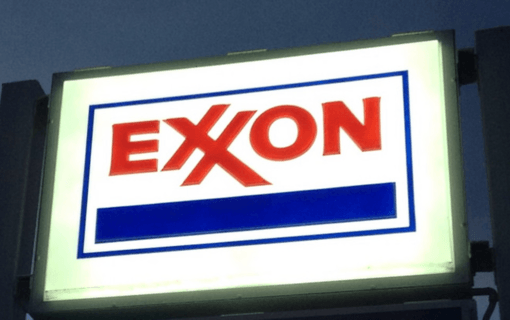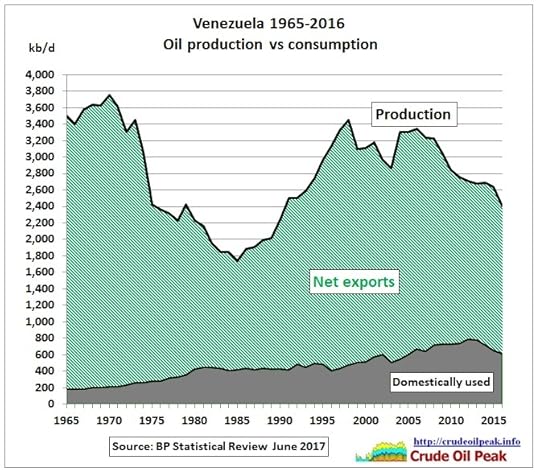Steve Bull's Blog, page 1317
September 12, 2017
In the Dark
The stock market is zooming this morning on the news that only 5.7 million people in Florida will have to do without air conditioning, hot showers, and Keurig mochachinos at dawn’s early light Monday, Sept 11, 2017. I’m mindful that the news cycle right after a hurricane goes kind of blank for a day or more as dazed and confused citizens venture out to assess the damage. For now, there is very little hard information on the Web waves. Does Key West still exist? Hard to tell. We’ll know more this evening.
The one-two punch of Harvey and Irma did afford the folks-in-charge of the nation’s affairs a sly opportunity to get rid of that annoying debt ceiling problem. This is the law that established a limit on how much debt the Federal Reserve could “buy” from the national government. Some of you may be thinking: buy debt? Why would anybody want to buy somebody’s debt? Well, you see, this is securitized debt, i.e. bonds issued by the US Treasury, which pay interest, and so there is the incentive to buy it. Anyway, there used to — back in the days when the real interest rate stayed positive after deducting the percent of running inflation. This is where the situation gets interesting.
The debt ceiling law supposedly set limits on how much bonded debt the government could issue (how much it could borrow) so it wouldn’t go hog wild spending money it didn’t have. Which is exactly what happened despite the debt limit because the “ceiling” got raised about a hundred times though the 20th century into the 21st so that the accumulated debt stands around $20 trillion.
Rational people recognize this $20 trillion for the supernatural scale of obligation it represents, and understand that it will never be paid back, so, what the hell?
…click on the above link to read the rest of the article…
Debt Nightmare: Does Anyone Actually Care That Our Exploding National Debt Is Destroying Our Future?
 When will America finally wake up? The borrower is the servant of the lender, and we now have a colossal 20 trillion dollar chain around our collective ankles. We have willingly enslaved ourselves, our children and our grandchildren, and yet our addiction is so insatiable that we continue to add more than 100 million dollars to our debt load every single hour of every single day. The national debt is sitting at a grand total of $20,162,176,797,904.13 at this moment, but now that the debt ceiling has been lifted that number is expected to shoot up very rapidly toward 21 trillion dollars by the end of the year. The national debt had been held down by accounting tricks to keep it under the debt limit for many months, but every time this has happened before we have seen the national debt absolutely explode back to projected levels once the debt ceiling was raised.
When will America finally wake up? The borrower is the servant of the lender, and we now have a colossal 20 trillion dollar chain around our collective ankles. We have willingly enslaved ourselves, our children and our grandchildren, and yet our addiction is so insatiable that we continue to add more than 100 million dollars to our debt load every single hour of every single day. The national debt is sitting at a grand total of $20,162,176,797,904.13 at this moment, but now that the debt ceiling has been lifted that number is expected to shoot up very rapidly toward 21 trillion dollars by the end of the year. The national debt had been held down by accounting tricks to keep it under the debt limit for many months, but every time this has happened before we have seen the national debt absolutely explode back to projected levels once the debt ceiling was raised.
But very few of our “leaders” in Washington seem to care that we are in the process of committing national suicide. There is no possible way that we will be able to continue to be the most powerful economy on the planet if we continue down this road. During Obama’s eight years in the White House, we added more than 9 trillion dollars to the national debt. That certainly improved things in the short-term, because if we could go back and take 9 trillion dollars out of the economy over the past 8 years we would be in an absolutely nightmarish economic depression right now.
But even with all of this borrowing and spending, our economy has still only grown at an average rate of just 1.33 percent a year over the last 10 years.
And by going into so much debt, we are literally destroying the future for our children and our grandchildren.
…click on the above link to read the rest of the article…
I Was an Exxon-Funded Climate Scientist

Photo by Mike Mozart | CC BY 2.0
ExxonMobil’s deliberate attempts to sow doubt on the reality and urgency of climate change and their donations to front groups to disseminate false information about climate change have been public knowledge for a long time, now.
Investigative reports in 2015 revealed that Exxon had its own scientists doing its own climate modeling as far back as the 1970s: science and modeling that was not only accurate, but that was being used to plan for the company’s future.
Now, a peer-reviewed study published August 23 has confirmed that what Exxon was saying internally about climate change was quantitatively very different from their public statements.
Specifically, researchers Geoffrey Supran and Naomi Oreskes found that at least 80 percent of the internal documents and peer-reviewed publications they studied from between 1977 and 2014 were consistent with the state of the science – acknowledging that climate change is real and caused by humans, and identifying “reasonable uncertainties” that any climate scientist would agree with at the time.
Yet over 80 percent of Exxon’s editorial-style paid advertisements over the same period specifically focused on uncertainty and doubt, the study found.
The stark contrast between internally discussing cutting-edge climate research while externally conducting a climate disinformation campaign is enough to blow many minds. What was going on at Exxon?
I have a unique perspective – because I was there.
From 1995 to 1997, Exxon provided partial financial support for my master’s thesis, which focused on methane chemistry and emissions. I spent several weeks in 1996 as an intern at their Annandale research lab in New Jersey and years working on the collaborative research that resulted in three of the published studies referenced in Supran and Oreskes’ new analysis.
…click on the above link to read the rest of the article…
The Military’s Warning on Global Warming
The U.S. military, which gets called on to cope with unrest tied to global warming, is taking the climate threat seriously as opposed to civilian politicians who are pandering to special interests, says ethicist Daniel C. Maguire.
It wasn’t supposed to be this way. The really neat American idea was that the military’s zest for battle would be restrained by the measured judgment of a civilian-led government. But the spreading perception internationally is that President Trump’s generals are the last-ditch guarantors of common sense in a deranged White House.

The image of the Earth rising over the surface of the moon, a photograph taken by the first U.S. astronauts to orbit the moon.
Let’s admit it. The military can be right. Secretary of State Colin Powell, a retired general, warned President George W. Bush privately against the crazy invasion of Iraq though he later betrayed his own good sense and joined the criminal conspiracy.
What the military recognizes and the civilian government does not, is that the biggest security threat, the biggest security threat our species has faced in 10,000 years, is global warming. The military doesn’t call it a hoax. The 2014 Quadrennial Defense Review calls climate change “an accelerant of instability” and a “threat multiplier.”
In October 2015 a diverse group of experts, including three former Defense Secretaries, said that climate change is “shaping a world that is more unstable, resource-constrained, violent, and disaster-prone.”
Africa is a case in point. Andrew Holland writing in Scientific American writes: “In northern Nigeria deforestation, overgrazing and increased heat from global warming have turned what was once productive farmland and savanna into an extension of the Sahara Desert. Lake Chad has lost more than 90 percent of its original size from drought, mismanagement and waste.”
…click on the above link to read the rest of the article…
September 11, 2017
The Next Spanish Bank Teeters, at Worst Possible Time
The timing could not have been worse: just as Spain faces its biggest constitutional crisis in over 40 years with Catalonia’s independence vote, another bank has begun to wobble.
Liberbank, Spain’s eighth largest lender, was spawned in 2011 from the shotgun marriage of three failed cajas (savings banks), Cajastur, Caja de Extremadura and Caja Cantabria. The new bank’s shares were sold to the public in May 2013 at an IPO price of €0.40. By April 2014, they were trading above €2, a massive 400% gain.
But by April 2015, the stock had started sinking. By May 2017, it was trading at around €1.20. Then came the collapse of Banco Popular in early June, which took many investors (but not WOLF STREET readers) by surprise, triggering a further crash in Liberbank’s stock as shareholders feared they would be next.
Scenting blood, short sellers began piling in, and just as the stock entered free-fall, the government intervened by imposing a temporary ban on short selling. The stock stabilized and even began to recover. By mid-July it had recrossed the psychological €1-threshold. Rumors began circulating that the short-selling ban would soon be lifted.
But in late August, after reaching €1.07, the stock’s progress began to waiver. At the beginning of this week Liberbank’s shares once again became a penny stock. Someone knew something…
Indeed. On Wednesday evening, the bank announced that it would expand its capital by €500 million, and these brave shareholders would be diluted. The response was to sell: shares plunged over 12% on Thursday and a further 5% on Friday.
The fear is understandable. Spanish investors are still smarting from Santander’s hurried takeover and bail-in of Banco Popular. For the first time since the Global Financial Crisis, shareholders and subordinate bondholders of a failing Spanish bank were not bailed out by taxpayers. Speculators were shocked and appalled.
…click on the above link to read the rest of the article…
Atlantic Hurricane Trends and Mortality
 Since 1851 there has been on average 5.4±2.5 (1SD) Atlantic Hurricanes per annum. There is a clear trend of rising frequency from 4.4 Hurricanes per annum in 1851 to 6.3 per annum today, that is a rate of increase of 1.2 hurricanes per annum per century.
Since 1851 there has been on average 5.4±2.5 (1SD) Atlantic Hurricanes per annum. There is a clear trend of rising frequency from 4.4 Hurricanes per annum in 1851 to 6.3 per annum today, that is a rate of increase of 1.2 hurricanes per annum per century.
Mortality from Hurricanes has also risen but at a rate that is only a small fraction of the growth in population. On average a Hurricane is expected to kill 135 people today but with a huge range from a handful to several thousands depending upon where landfall is made and severity. While tragic, this is a tiny cost that is dwarfed by the thousands of lives saved through deployment of better shelter, early warning, evacuation and rescue by helicopters, boats and vehicles; all provided by fossil fuels.
Once again I venture on to territory I’m sure must have been covered a hundred times before and one I know very little about. Are Atlantic Hurricanes becoming more frequent, getting worse and are they killing more people?
The answers. Yes, they seem to be getting more frequent. I don’t have the data to hand to say if they are getting worse. And yes, they are killing more people, but in a proportion that is way below population growth in affected areas. Machines, infrastructure and communications all built from or powered by fossil fuels are offering far greater safety from these natural disasters when they occur, saving many thousands of lives.
I want to begin by offering sympathy to all those affected by these on-going tragic events. We will send help out of our generosity.
…click on the above link to read the rest of the article…
Apocalyptic September? Here Is A List Of 27 Major Disasters That Have Already Happened So Far This Month
 Two major hurricanes, unprecedented earthquake swarms and wildfires roaring out of control all over the northwest United States – what else will go wrong next? When I originally pointed to the month of September as a critical time, I had no idea that we would see so many catastrophic natural disasters during this time frame as well. Hurricane Harvey just broke the all-time record for rainfall in the continental United States, Hurricane Irma is so immensely powerful that it has been called “a lawnmower from the sky”, vast stretches of our country out west are literally being consumed by fire, and the magnitude-8.2 earthquake that just hit Mexico was completely unexpected. As I have stated so many times before, our planet is becoming increasingly unstable, but most people simply do not understand what is happening.
Two major hurricanes, unprecedented earthquake swarms and wildfires roaring out of control all over the northwest United States – what else will go wrong next? When I originally pointed to the month of September as a critical time, I had no idea that we would see so many catastrophic natural disasters during this time frame as well. Hurricane Harvey just broke the all-time record for rainfall in the continental United States, Hurricane Irma is so immensely powerful that it has been called “a lawnmower from the sky”, vast stretches of our country out west are literally being consumed by fire, and the magnitude-8.2 earthquake that just hit Mexico was completely unexpected. As I have stated so many times before, our planet is becoming increasingly unstable, but most people simply do not understand what is happening.
My good friend Zach Drew is getting married next month, and I would encourage everyone to go wish him well on Facebook. On Friday, he posted the best summary of the major disasters that we have been experiencing so far this month that I have seen anywhere…
 California is on fire.
California is on fire. Oregon is on fire.
Oregon is on fire. Washington is on fire.
Washington is on fire. British Columbia is on fire.
British Columbia is on fire. Alberta is on fire
Alberta is on fire Montana is on fire.
Montana is on fire. Nova Scotia is on fire.
Nova Scotia is on fire. Greece is on fire.
Greece is on fire. Brazil is on fire.
Brazil is on fire. Portugal is on fire.
Portugal is on fire. Algeria is on fire.
Algeria is on fire. Tunisia is on fire.
Tunisia is on fire. Greenland is on fire.
Greenland is on fire. The Sakha Republic of Russia is on fire.
The Sakha Republic of Russia is on fire. Siberia is on fire.
Siberia is on fire.
 Texas is under water
Texas is under water India, Nepal, Pakistan, and Bangladesh, experience record monsoons and massive death toll.
India, Nepal, Pakistan, and Bangladesh, experience record monsoons and massive death toll. Sierra Leone and Niger experience massive floods, mudslides, and deaths in the thousands.
Sierra Leone and Niger experience massive floods, mudslides, and deaths in the thousands.
…click on the above link to read the rest of the article…
Peak oil in Latin America
This post is using mainly BP’s Statistical Review published in June 2017. Although these statistics put Mexico under North America, it is included here and added to South and Central America’s data at the end of this article. We start with 2 big oil suppliers: Brazil and Venezuela.
 Fig 1: Brazil’s oil production, net imports and bio fuels
Fig 1: Brazil’s oil production, net imports and bio fuels
Brazil’s oil production (crude plus NGLs) has not yet peaked. BP’s consumption data include bio fuels which are a very important contributor to liquid supplies (data taken from EIA’s international energy statistics). We can see that net oil imports have been reduced and even turned into net exports (145 kb/d in 2016) by using biofuels (ethanol and bio diesel, around 560 kb/d in 2016).
 Fig 2: Venezuela’s oil production and net exports
Fig 2: Venezuela’s oil production and net exports
Venezuela’s oil production peaked in the 70s and more recently in 2006. Conventional oil fields in Maracaibo peaked in 1997 while extra heavy oil production from the Orinoco belt cannot offset that decline. Low oil prices have worsened this situation. The impact on the economy is devastating as can be seen in media reports every day. They usually blame Maduro’s socialist government for this malaise but rarely mention the oil geological problems. A separate article on this is under preparation. Since 2006, Venezuelan production declined by 930 kb/d, more than Brazil’s growth of 800 kb/d in the same period. Recent monthly data from JODI show these different trends. Venezuela’s sharp drop in 2003 was caused by a PDVSA strike. Can that happen again?
 Fig 3: Brazil vs Venezuela monthly crude production
Fig 3: Brazil vs Venezuela monthly crude production
In its August 2017 oil market report the IEA showed declining exports from Venezuela.
…click on the above link to read the rest of the article…
Taking Aim at Wikileaks
Various scribbles have started to pepper the conversation started by the adventurous Mike Pompeo after he branded WikiLeaks a hostile intelligence agency before the Center for Strategic and International Studies. (This would have generated a wry smile of content from Julian Assange.)
The words of the Central Intelligence Agency chief are worth retelling in their mind distorting wonder: “It’s time to call out WikiLeaks for what it is, a non-state hostile intelligence service, often abetted by state actors like Russia.”
Individuals like Assange and Edward Snowden receive the necessary special treatment as history’s great turncoats: “As long as they make a splash, they care nothing about the lives they put at risk or the damage they cause to national security.” Celebrity disrupters, dangerous irritants, narcissists in pursuit of personal glory.
This wretchedly desperate sentiment – for its nothing else – has wound its way into Congressional ponderings. Prior to the August District Work Period, the Senate Intelligence Committee took up Pompeo’s views, slotting into the Senate Intelligence Authorization Act (SB 1761) some suggestive wording:
“It is the sense of Congress that WikiLeaks and the senior leadership of WikiLeaks resembles a non-state hostile intelligence service often abetted by state actors and should be treated as such a service by the United States.”
This inventive provision passed 14-1, the only demurral coming from Democrat Ron Wyden of Oregon. To The Hill, Wyden explained that “the use of the novel phrase ‘non-state intelligence service’ may have legal, constitutional, and policy implications, particularly should it be applied to journalists inquiring about secrets.” And what, he feared, of the “unstated course of action” against those sinister non-state hostile intelligence services?
…click on the above link to read the rest of the article…
Hackers Break Into Equifax – Big Time!
Welcome to the reality of the Digital World and there are those in government who want to eliminate cash and force everyone into electronic deposits. Well the new data breach at credit bureau Equifax appears to have affected up to 143 million people. On top of that, Equifax has been slow to deal with the issue. This is reminiscent of the real Insider Trading from the 1930s when directors realized the company was bankrupt so they sold their stock before any announcement. Here we have the company’s chief financial officer and two other senior executives cashing in on almost $2 million of Equifax stock once they learned about the hack, according to Business Insider’s Mohammed Hadi and Bryan Logan.
The Equifax data breach may have really profound lasting effects . Because they may have access to your information on consumers’ credit reports, including their Social Security numbers, credit card numbers and driver’s license numbers, they could open credit accounts in consumers’ names. They then could file an income tax return and get a refund before you even file your taxes. The Federal Trade Commission warned consumers last Friday to file their taxes early — “as soon as you have the tax information you need, before a scammer can.”
The IRS doesn’t initiate any contact with taxpayers by email, text message or social-media channels requesting any information. If anyone is contacted, be very concerned and do not answer any questions or validate anything. Call an accountant ASAP.



